Supreme Commander of the Korean People's Army
| Supreme Commander of the Korean People's Army | |
 | |
| Chosŏn'gŭl | 조선인민군 최고사령관 |
|---|---|
| Hancha | 朝鮮人民軍最高司令官 |
| Revised Romanization | Joseon Inmin-gun Choego Saryeonggwan |
| McCune–Reischauer | Chosŏn Inmin'gun Ch'oego Saryŏnggwan |
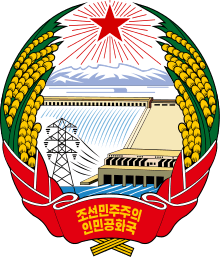 |
| This article is part of a series on the politics and government of North Korea |
|
|
| Foreign relations |

The Supreme Commander of the Korean People's Army is the highest post in command of the Korean People's Army (KPA), the armed forces of North Korea, and is in charge of one of the largest standing armed force in the world with around 1.8 million active duty military personnel and military reserves. Constitutionally, the post is lashed to the chairmanship of the country's National Defense Commission. According to the constitution of North Korea: "The First Chairman of the National Defence Commission of Communist Korea is the supreme commander of the whole armed forces of the Democratic People's Republic of Korea and commands and directs all the armed forces of the State."[1]
History
Kim Il-sung was the first Supreme Commander of the Korean People's Army upon the founding of North Korea on 1948 after which he was selected to be the leader of the country. He, upon assumption of power organized the KPA and had the Soviet Union then equipped it with modern weapons, tanks, planes, artillery and ships deemed unusable by USSR and Communist China. During the Korean War, Kim Il-sung then the General Secretary of the Workers' Party of Korea (WPK) as well as the premier of the government and KPA Supreme Commander took care of the military operations only to be deprived of command by China in the latter stages. After the war, he resumed command of the KPA even after his election as President of North Korea in 1972. On the 1990s as he was aged, Kim relinquished the post of Supreme Commander of the KPA as well as the chairmanship of the country's National Defense Commission that supervises military matters to his son and designated heir as the next leader of North Korea, Kim Jong-il one year before his demise on 1994. The elder Kim remained as the President of North Korea, General-Secretary of WPK and Chairman of the party's Central Military Commission, a party organ propagating politics in military affairs. After Kim Il Sung's death on 1994, Kim Jong Il, being the new leader of the country and KPA Supreme Commander imposed Songun policy that prioritizes first the military affairs of the country than anything else. Kim Jong-il in his own death on 2011 was succeeded by his son Kim Jong-un,who replaced him also as the new leader of the country. Kim Jong-un was publicly declared as the new Supreme Commander by the Rodong Sinmun, on 24 December 2011 and officially appointed to the position on 30 December 2011.[2][3]
Supreme Commanders of the Korean People's Army
| Portrait | Name | Tenure | Lifespan | Military Rank |
|---|---|---|---|---|
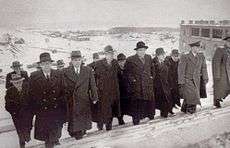 |
|
|
19 September 1976 (aged 76) |
(Vice Marshal) |
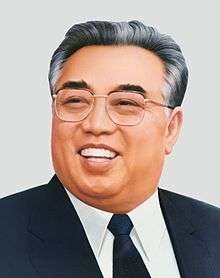 |
|
|
8 July 1994 (aged 82) |
(Grand Marshal) |
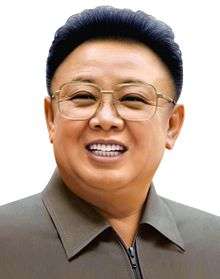 |
|
|
17 December 2011 (aged 70) |
(Grand Marshal) |
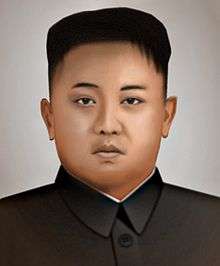 |
|
|
|
(Marshal of the Republic) |
Notes
References
- ↑ "Article 102". Socialist Constitution of North Korea (PDF). Amended and supplemented on April 1, Juche 102 (2013), at the Seventh Session of the fourth Supreme People's Assembly. Pyongyang: Foreign Languages Publishing House. 2014. p. 22. ISBN 978-9946-0-1099-1.
- ↑ "N.Korea declares Kim Jong-Un commander of military". Agence France-Presse. 30 December 2011. Archived from the original on February 24, 2014. Retrieved 3 March 2016.
- ↑ "North Korea: Kim Jong-un hailed 'supreme commander'". BBC News. 24 December 2011. Retrieved 3 March 2016.
- ↑ Fyodor Tertitskiy (12 June 2014). "An Exception to the Rules of Kimism". DailyNK. Retrieved 3 March 2016.